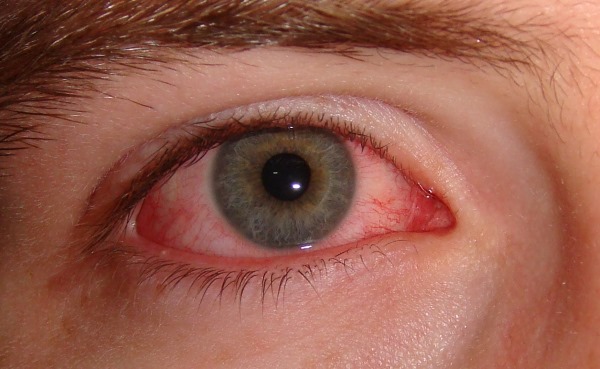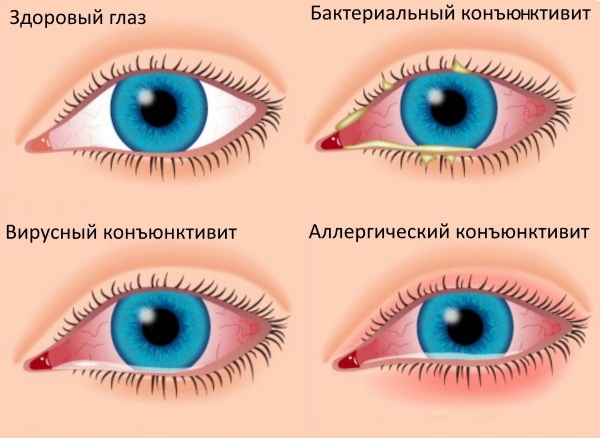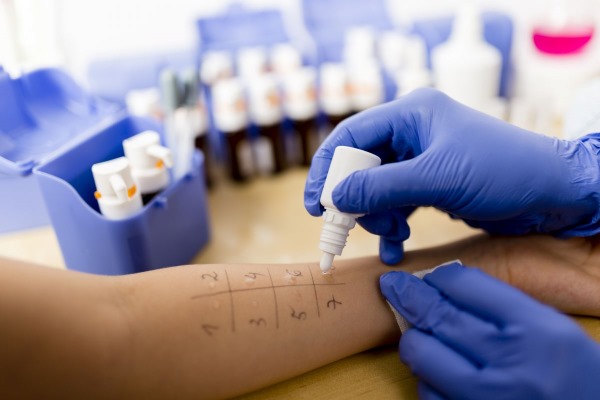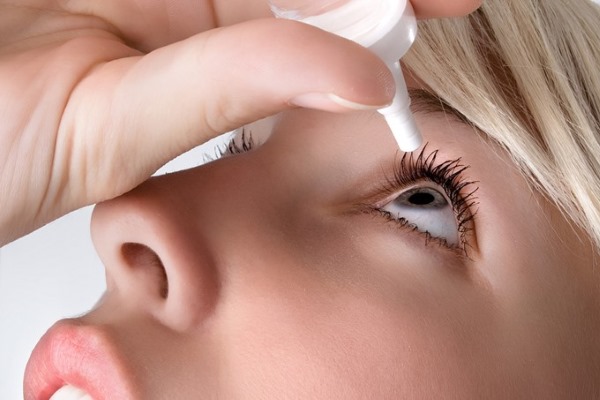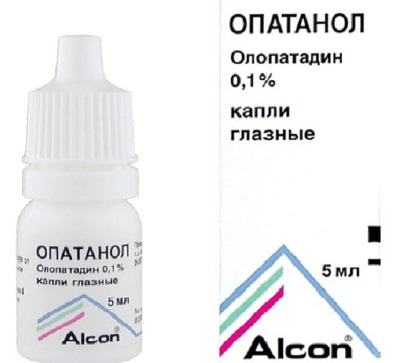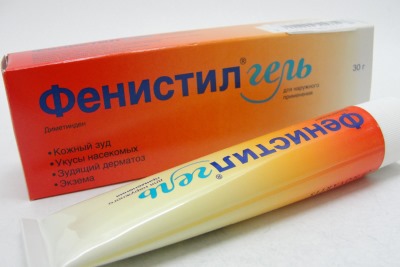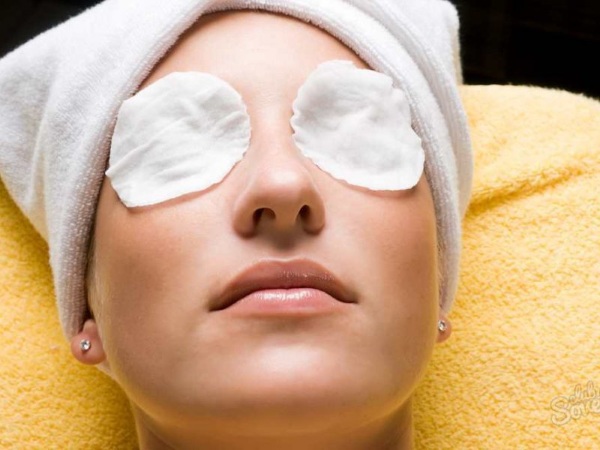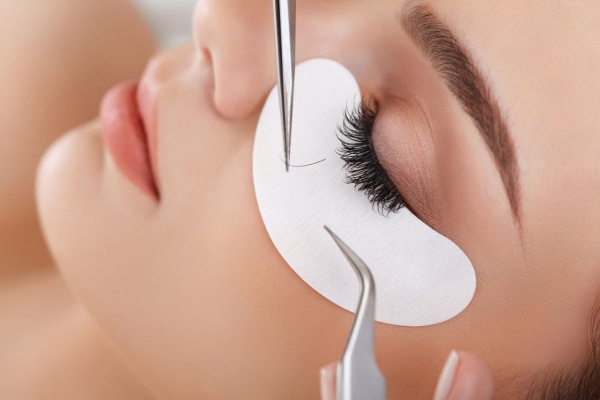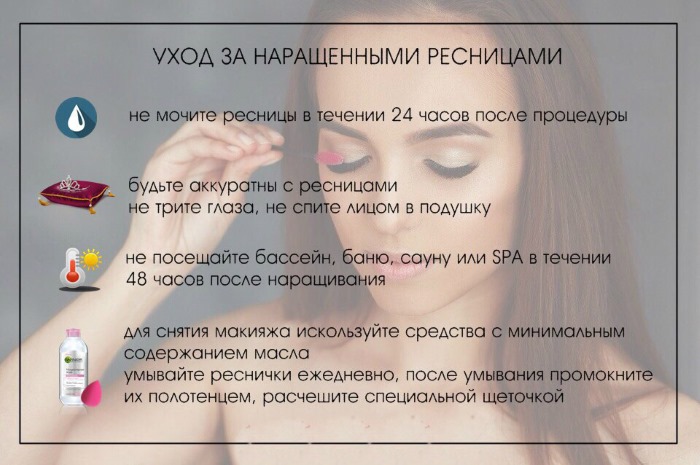Extended eyelashes are a low-maintenance alternative to everyday makeup. When deciding on this cosmetic procedure, it is important to know that it often brings surprises in the form of allergies.
Causes of allergy to eyelash extensions
Although allergic reactions to fake eyelashes are rare, some people still experience redness, swelling, and itching after a cosmetic procedure. The reaction may be caused by an allergy to the cyanoacrylate base that is present in every eyelash extension adhesive.
Cyanoacrylates are a type of fast acting adhesives used in many industries. Like all chemicals, they can become irritating at any time: first time or later. An allergy to eyelash extensions occurs when the glue used in a cosmetic procedure comes into direct contact with the skin.
The more often the adhesive comes into contact, the more likely a reaction will occur.
All adhesives are of medical grade. This means they use ingredients similar to the adhesives used in hospitals for wound closure and suturing. Glue vapors can get into the sclera and cause it to burn when the eyes are accidentally opened while applying the eyelashes. In this case, a burning sensation occurs, which passes during the day, but does not cause allergic edema and itching.
Associated symptoms
Knowing the symptoms of an allergic reaction to eyelash extensions will help to identify the problem at an early stage and seek help in time. Allergy symptoms range from mild irritating redness to severe inflammation that impairs vision. If the symptoms persist and medications do not bring relief, then an allergist should be consulted.
The main symptoms are:
- Swelling of the eyelids.
- Redness of the sclera.
- Itching.
- Lachrymation.
- Feeling of a foreign body in the eye.
In addition to allergic reactions, some complications are possible:
- Irritation... Artificial eyelashes sometimes cause irritation of the conjunctiva, the cornea of the eye, which appears several hours after the extension procedure.
- Erosion... Damage to the inner surfaces of the eyelids, which occurred during the procedure, can damage the eyelashes, which will lead to inflammation and erosion.
- Infection of the eyelids... Improper care of extended eyelashes, fear of washing them, leads to the accumulation of dirt on the surface of the eyelashes. The infection may spread later. The main symptom in this case is severe redness of the eyes.
- Dry eye syndrome... The eyelashes have the optimal length, which helps a person to protect their eyes from wind and dust. A large increase in the length of artificial eyelashes leads to a fan-shaped effect, which provokes the onset of the dry eye symptom.
- Alopecia... Frequent lengthening leads to a deterioration in the growth of natural eyelashes, and eventually to their baldness.
Differences between allergies and poor-quality build-up
An allergy to extended eyelashes is different from eye irritation that a person sometimes experiences during the procedure. Irritation is caused by the edge of the pad, tape, or patch being close to the eyeball, causing redness in the lower part of the eye. It can happen if you open your eyes suddenly after or during glue application.
In this case, its vapors penetrate into the shell of the eye, causing a burn. For some, irritation can occur after the adhesive has cured. Redness and itching occurs within 24 hours as a reaction to glue fumes, but as the glue base hardens, it all goes away.
With poor-quality eyelash extension, symptoms appear:
- tingling of the eyelids when closing your eyes;
- itching in the cornea;
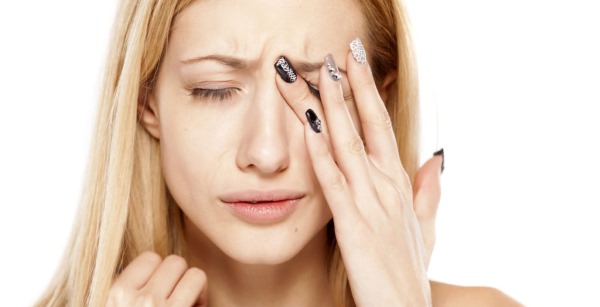
- general discomfort;
- the desire to scratch the eyes and remove the "foreign" object.
Improper extensions can harm your eyes and the growth of your own eyelashes.
The difference between allergies and poor quality eyelash extension services:
- with allergies, antihistamines and eye drops always help;
- after an incorrectly performed procedure, pain appears when it comes into contact with eyelashes, combing them;
- comfort and inconvenience accompanies the entire period of wearing eyelashes.
Effects
Many people know that after artificial eyelashes are extended, especially if it is done often and continuously, their own hairs become thin and weakened, more often fall out. To prevent this from happening, it is necessary to use high-quality means when building up, correct eyelashes in time and give yourself over to professionals.
Do not wait for your own eyelashes to deteriorate under the influence of glue and artificial hairs.
The extended eyelashes should be corrected monthly, so as not to cause allergies and deteriorate. After a year, they must be removed. After each cycle of extension, you should give rest to your own eyelashes so that they recover. During this period, they need to be strengthened with vitamins and nutrients.
Do not use this procedure if contact lenses are inserted. In this case, by the evening, the eyes become irritated, red and tired. All of these factors can impair vision over time.
With conjunctivitis, you should also avoid eyelash extensions. Long-term wearing of artificial eyelashes can lead to reddening of the sclera, the appearance of edema. It is undesirable to visit the sauna, because eyelash detachment may occur under the influence of high temperatures.
Diagnostics
Allergy to eyelash extensions has the same symptoms as some eye diseases, making an accurate diagnosis a must. Diagnostic tests include microscopic examinations that look at swollen blood vessels on the surface of the eye.
In addition, the doctor will check the type of protein in the blood cells in the allergy-prone areas of the eye. In case of allergic diseases, the eyelids become swollen, bright light is unbearable. Allergy symptoms are accompanied by a runny nose, sneezing, itching.
Allergy test methods
Allergy skin tests are done for any type of allergic disease. They determine a person's sensitivity to allergens.
For tests, solutions are offered:
- herbs;
- medicines;
- food;
- chemical substances.
In the course of checking compatibility with various types of adhesives, it is proposed to carry out tests for cyanoacrylates.
They are carried out in the following way:
- Application... A tampon moistened with an allergen solution is applied to the skin.
- By scarification... A few drops of the allergen are applied to the skin, and then scratches are made with a scarifier.
- Prik tests... Through drops of the allergen applied to the skin, punctures are made in 1 mm.
If redness appears in the places of cuts, punctures or wetting, we can talk about an identified allergy to this substance.
Then a conclusion is given indicating the degree of allergy dependence:
- negative;
- weakly positive;
- positive;
- dubious.
IgE blood test
Immunological analysis of blood allows you to determine with great accuracy the presence of allergies and identify allergens that actively affect the body.
There are two types of analysis:
- Total IgE, which determines immunoglobulin E.
- Specific IgE, which detects specific antibodies to a specific allergen. In people prone to allergies, the level of these antibodies is greatly increased.
The normal indicator for the level of total immunoglobulin for adults is 100 IgE U / ml. It makes no sense to test for all existing allergens. This will only blur the clinical picture and lead to unreasonable restrictions.
Allergens are checked based on the history of suspicion. Recently, a new method has been used for the determination of human IgE antibodies. This is a test for the diagnosis of ImmunoCAP ISAC allergy.
How to treat allergies
Allergy is the struggle of all systems of the human body with an allergen that it cannot recognize. Once in the body, it causes the release of histamines. In this case, upon contact with the eyes, the shell begins to come into contact with the allergen and the longer the contact lasts, the stronger the swelling and redness becomes. It is also related to the fluid in the eyelid skin.
The lymphocytic tissue present in the conjunctiva gives the same reaction. All this leads to a weakening of the protective functions of the eye, disruption of the lacrimal glands.
If the violation is not prevented in time, then viruses may penetrate, which will lead to the development of eye inflammation, conjunctivitis.
First aid
The eyelash extension procedure is safe and painless for patients. But 1% of 100 people who turn to the master have a tendency to allergies.
What to do first:
- First of all, you should get rid of the allergen, remove the extended eyelashes.
- Then the eyes need to be washed with warm boiled water.
- To drip antiallergic drops.
- Take an antihistamine.
Eye drops: list, instructions
To eliminate red eyes, cramps, minor inflammation, vasoconstrictor drugs are used:
| Name | Mode of application |
| Montevizin | Instilled into the conjunctival sac of the eye 1-2 drops 1-2 times a day, apply no more than 3 days |
| Pure tear | It is recommended to instill 1-2 drops in each eye as needed |
| Systein | It is used to moisturize the eyes 1-2 drops 1-2 times a day |
| Visoptic | 1-2 drops in both eyes, 2-3 times a day |
| Vizin | 1 drop in both eyes, no more than 1 time per day, no more than 3-4 days. |
| Lekrolin | The initial dose is 1-2 drops, with an interval of 4-6 hours. |
| Opatanol | 1 drop 2 times a day, but not less than 8 hours. |
All drugs are indicated to eliminate conjunctival hyperemia, relieve edema caused by allergies.
Preparations: names, dosage regimen
Allergy to eyelash extensions is eliminated with drugs that block the production of histamine:
| Name | How to use | |
| 1st generation drugs, (often cause drowsiness) | Suprastin | Take at the same time with food, drinking plenty of water, 1 tab. 2-3 times a day |
| Claritin | 1 tab. 1 time per day, regardless of food | |
| 2nd generation drugs | Zodak | Regardless of food intake, with a large amount of water, 1 tab. 1 per day |
| Claridol | 1 tablet once a day | |
| Fenistil | Distribute 60-120 drops over 3 doses | |
| Lomilan | It is recommended to chew and drink 1 pc with water. 1 per day | |
| Preparations 3 generations | Cetrin | It is taken once a day at 10 mg or 2 times at 5 mg |
| Suprastinex | It is recommended to take 1 tab. (5 mg) per day | |
| Levocetirizine | It is taken before or during meals, with plenty of water, 1 tab 1 time per day | |
| Erius | Take 5 mg per day without splitting | |
| Telfast | Orally 1 time per day, 1 tablet | |
| Ointments, antiallergic gels | Hydrocortisone | It is applied in a thin layer on the surface of the eyelid, bordering the eyeball, once a day |
| Akriderm | Lightly rub into the skin, apply 1 to 3 times a day | |
| Fenistil | The gel is applied 2 to 4 times a day in a thin layer |
Each group of drugs has its pros and cons, the effectiveness largely depends on the sensitivity of the human body that takes them.
Folk remedies: recipes and applications
For the pink eye symptom, which often appears after the extension procedure, homemade recipes help well:
- Green tea... The bioflavonoids present in this drink relieve irritation, inflammation, and at the same time fight infections. Brew a bag of good, natural green tea in boiled water, then, when it cools down, apply on the sore eye. You can make a lotion using cheesecloth dipped in brewed leaf tea.
- Aloe Vera Gel... Its components, aloin and amodin, have antibacterial and antiviral properties, accelerate healing, and quickly reduce inflammation.
- Neem oil... A strong antiseptic found in the fruit of an olive-like tree. Rub the oil around the eyelids overnight.
The following recipes help eliminate inflammation, redness, and itching:
- Eye rinsing with salt water... You can buy ready-made salt cleansers or make at home. Boil some coarse salt in water, let it cool down and apply lotions to the eye area.
- Cool compress... Relieves puffiness and soothes the eyes.
- Curcumin... The substance present in turmeric is anti-inflammatory and inhibits the release of histamine from mast cells. This substance suppresses eye allergies. Take ½ tsp. turmeric powder, dissolve in ¼ glass of water and apply the solution in the form of lotions on the eyelids and outer parts of the eyes. Turmeric is added to tea to fight inflammation inside the body.
- Oolong tea... Oolong tea has been found to be a partially fermented tea that relieves allergic symptoms. With it, you can make lotions on the eyes, drink during the day.
Can allergies be cured without removing eyelashes
Allergy is a chronic condition of a person prone to allergies. It can manifest itself when it comes into contact with various materials and substances. If in the past a person has had signs of allergic inflammation, one should be careful with all new materials, especially those of chemical origin.
Before extending eyelashes, you should make a test for the glue that will be used in this procedure. The easiest way is to apply it to the wrist and monitor the skin reaction. If you are intolerant, you can try another type of glue or make a test on it in a medical laboratory.
If the extension is done for the first time, you can stick 1–2 eyelashes to each eye and follow the reaction for an hour.
All these procedures are easier to do than to remove all eyelashes after extension due to allergies. Antihistamines will only bring temporary relief, but the allergy will not be completely cured, and the eyelashes will have to be removed anyway.
How to prevent eyelash allergies
As mentioned above, glue vapors are an allergen. In most cases, salons use a transparent resin made from hypoallergenic materials. Sometimes black paint is added to it, and this adds the risk of allergies.
To minimize the risk, you should pay attention to whether the salons adhere to the following rules:
- the procedure should be carried out in a well-ventilated area so that glue vapors do not linger in the room;
- artificial and natural eyelashes must be cleaned with saline;
- instruments must be sterilized;
- gel pads applied to the lower eyelids should not fall into the eye area;
- the pads should be fixed with special tape;
- to exclude an allergic reaction before the procedure, which is carried out for the first time, a single build-up is done on the outer corners of the eye of several cilia to test for allergy tolerance.
Can allergies be cumulative?
Allergy to eyelash extensions cannot be cumulative. All manifestations of an allergic nature occur within 1-2 hours after contact with an allergen, in rare cases - within a day.
Can an allergy appear after 1, 2, 3 weeks of wearing eyelash extensions?
An allergic reaction of the body manifests itself immediately, immediately after eyelash extension:
- The time has come for correction or some eyelashes began to lag behind, peel off, interfere with the eyes.
- Poor eye and eyelid care. After the procedure, many are afraid to wash their eyelashes, thinking that this will harm them. On the eyelids and eyelashes, particles of cosmetics, creams, dust, waste products of the sebaceous glands begin to accumulate. Together, this leads to eye irritation, itching, redness and ultimately inflammation.
The resulting allergy to eyelash extensions brings a lot of inconvenience. In addition, there is a risk of developing inflammatory processes. Therefore, the best solution would be to remove eyelashes with the help of a specialist in a beauty salon.
Author: Belyaeva Anna
Article design: Anna Vinnitskaya
Eyelash Extension Allergy Videos
Allergies and reactions to eyelash glue:


